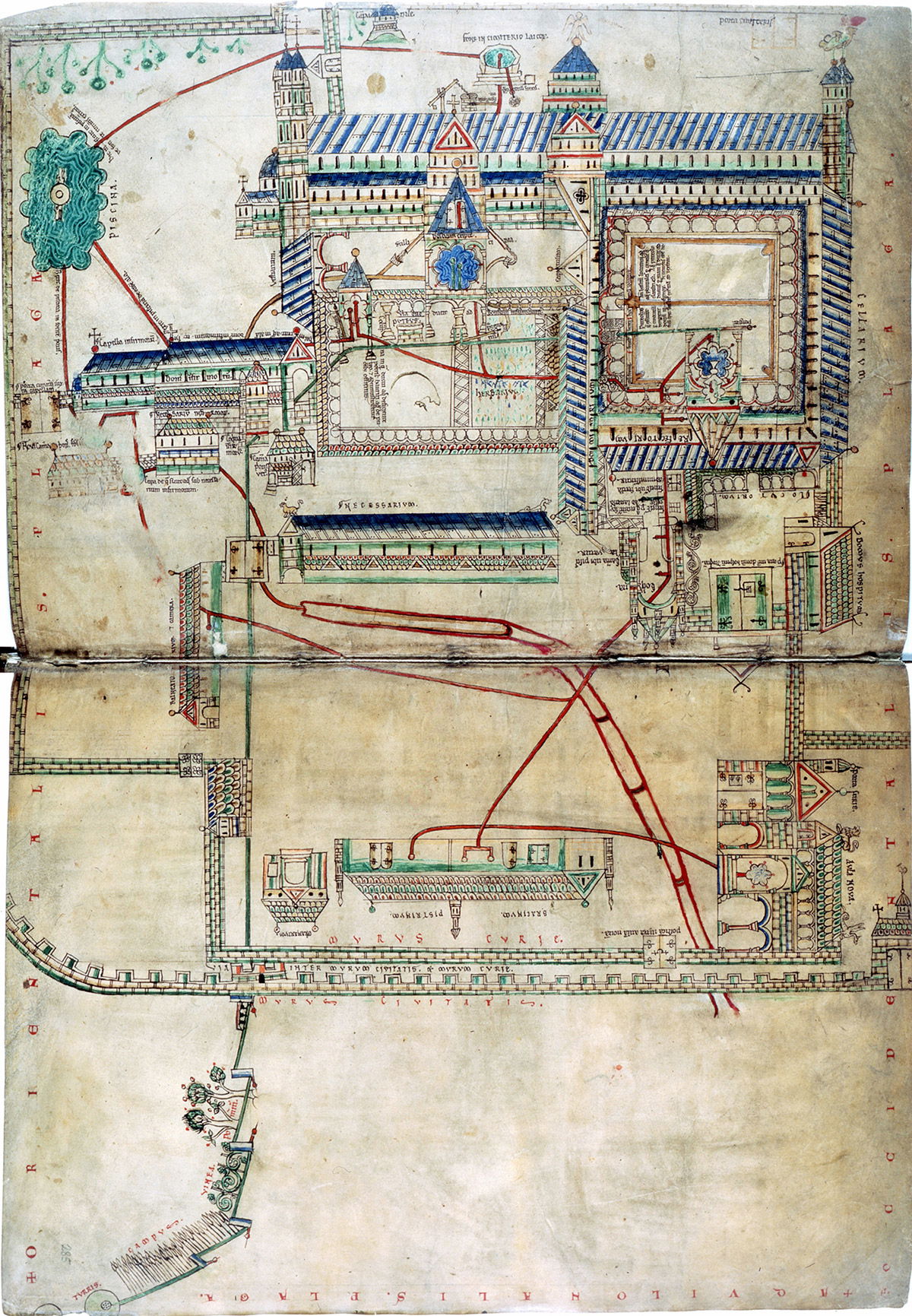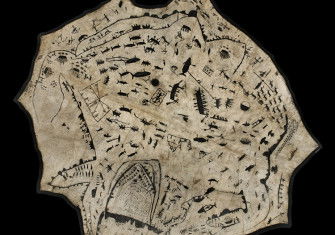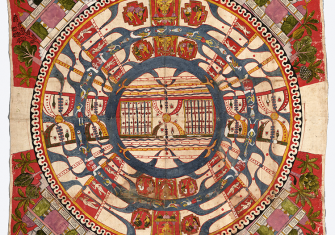The Map: Canterbury Cathedral, 12th century
An aerial view of a hydraulic system that pumped fresh water into the monastic complex.

Having been sent to convert the English by Gregory the Great in the sixth century, St Augustine founded a cathedral at Canterbury, which became one of the most powerful places in Anglo-Saxon England. A Benedictine abbey was added in the 10th century.
Although the Rule of Benedict, by which the order lived, dictated that bathing was considered a luxury, the daily routine required washing before meals and in the mornings. Water was also, of course, needed in all areas of the priory. This plan, designed by Prior Wilbert (1153-67), shows their solution.
Drawn into a book held in the cathedral’s library called the Eadwine Psalter, named for the scribe who produced it, the plan shows an aerial view of the 12th-century hydraulic system that circulated water into the monastic complex, through cornfields, vines and orchards, around the priory and then out again.







